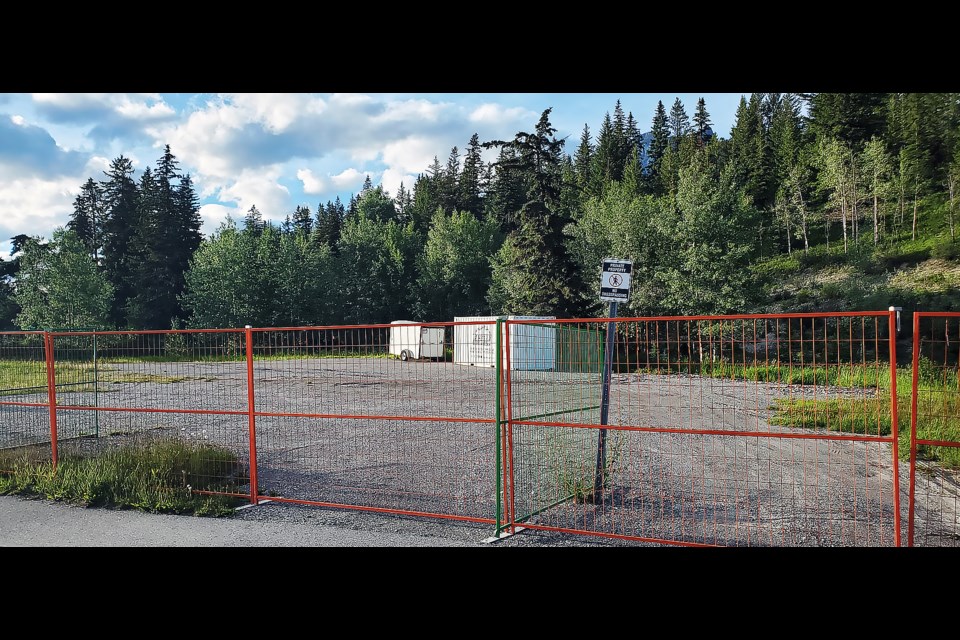MD OF BIGHORN – Over the course of 15 hours, spread through two days from July 14 to 15, the Municipal District of Bighorn’s Subdivision and Development Appeal Board (SDAB) heard from the applicant and appellant regarding the new visitor accommodation development slated for Harvie Heights.
The 55-unit development was approved by the Municipal Planning Commission (MPC) earlier this year, but the main concern among opponents, including the Harvie Heights Community Association (HHCA), to the development was the impact on the aquifer.
“The members of the HHCA are very concerned about their water wells and the aquifer, overflow parking … and the recent flooding which affected residential, commercial, and MD properties,” said Howard Hepburn, president of the HHCA.
With the water as a source of pride for residents, there is a concern the development will have a negative impact.
“We feel our water is superior to the Canmore water that has a chlorine odour and taste. We are blessed with the best water in the world,” Hepburn said. “The residents value the water from their wells very highly…our members are scared about losing their wells.”
Louis Kamenka, a geologist and Harvie Heights resident, raised concerns over the aquifer being tapped and potentially breached during construction. It is believed there are two aquifers in the Harvie Heights area, the upper and lower aquifer. Most residents get their water from the upper aquifer.
“It does have a limited supply of water. It is recharged every year from snow melt and rain,” Kamenka said. “It becomes almost full on a yearly basis. Then it gets to its lowest point in January or February most years.”
Kamenka added on a few occasions, the last time being in 2019, the wells have gone dry.
“In those occasions, we had to bring water to our homes.”
Kamenka said a breached aquifer would be a serious problem, especially considering the upper aquifer is under immense pressure.
“The upper aquifer in our area is believed to have seven metres of head on it, so elevation,” Kamenka said. “That is a lot of pressure pushing on what ever is holding it in place.”
Kamenka cited examples of breached aquifers, including in Vancouver and Gibsons, British Columbia. The Vancouver breach cost $10 million to cap the groundwater leak.
“The contractor who breached it did not do any investigation prior to digging and that is what they ended up with,” he said. “Engineers stated there is a less than five per cent chance of sealing a breached aquifer.”
In the proposal to the planning commission, there were 68 conditions listed for the approval of the development by MD administration.
Condition six related to the upper aquifer, requiring the installation of a monitoring well at the location. This condition was altered to have a minimum of three wells, which would monitor the aquifer on a weekly basis.
The wells will be screened into the saturation zone of the upper aquifer, to 14 to 15 metres below the surface. The developer asked for a time frame for the monitoring due to the cost related to it.
On June 30, results were released, stating it showed 1.5 metres of separation depth between the bottom elevation of footings in the development with the top of the upper aquifer.
The municipality requested a hydrologist’s report from Jonathan Kerr at Morrison Herschield to review the recommendations by the appellant’s hydrologist.
“Given the findings of the recent site characterization work, the potential for negative impacts caused by the retaining wall, are not expected,” Kerr said in his report.
Regarding the three test wells, Kerr said the findings indicated the elevation of the subject retaining wall would be located at an elevation above the Upper Aquifer water table.
“As such, there will be no impact to users of this important resource,” Kerr said in his report.
Peter Scholz, director of planning services, said that the municipality did not want the aquifer to break and that is why the MD specified the need for test wells.
“The municipal team was of the understanding there would be three holes just above the highest proposed retaining well, leading down so that we could have enough information.”
Scholtz said he walked the site himself and it is hard to know what is going on underneath the ground.
“We think the risk is low, but the consequences are high.”
Over the life of the site, to when it was a gas station, 21 wells and test pits had been dug at the site, including nine by the developer’s project team.
“Strata is not a manufactured product; it is not a straight flat layer of material. They thicken and thin and at some places, they don’t exist,” said Ken Hugo, hydrogeological consultant for the developer stated. “The upper aquifer does not come near the surface. There is always a good thick dry zone.”
Hugo added that due to the slope of the land and the aquifer, the development will not intersect the aquifer.
“We will not intersect the water with that slope, we will always be below it,” Hugo said. “That is consistent with our test pits and in our water supply wells on site.”
The appellant had stated the development area is a waterbody environmentally sensitive area because of the aquifer. Municipal administration responded by saying the assertion is based on the definition of a waterbody under the Water Act and that the Water Act is not the appropriate document to refer to for the aquifer, as a waterbody is defined as on the surface of the land, not below it.
Administration also said more than 112 wells were in the aquifer at Harvie Heights and the municipality had not prevented development there. Administration added the role of the SDAB is not to determine if the MPC made a legally correct decision, but to reweigh the evidence and consider new evidence.
The SDAB will return with its decision within 15 days of the appeal hearing.




